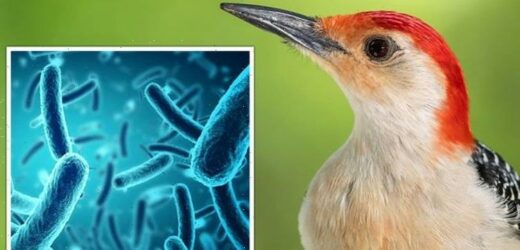Pigeons ‘pose very little risk to spreading disease’ says expert
We use your sign-up to provide content in ways you’ve consented to and to improve our understanding of you. This may include adverts from us and 3rd parties based on our understanding. You can unsubscribe at any time. More info
Scientists have been left perplexed as songbirds in mid-Atlantic states have been dropping dead, according the NC Wildlife Resources Commission. The disease – which causes the eyes of birds to crust over – has been expanding in reach since being reported four months ago in Kentucky, Virginia, West Virginia, Maryland and Washington DC. In a Facebook post warning residents in North Carolina, officials said: “More recently additional states have been included, and our agency has begun receiving reports of sick and dying birds which may be due to the new disease.”
Experts are investigating the matter, but they believe it is spread by “birds congregating at feeders and baths,” so the public are being asked to remove bird feeders “until the threat subsides”.
The officials added: “We have not heard of any reports about these health issues affecting hummingbirds.
“So, we don’t necessarily need to recommend you take down your (hummingbird) feeders, but be sure to clean them and change the food regularly.”
Several species of birds have been affected by the mystery illness, including the blue jay, European starling, common grackle, American robin, northern cardinal, house finch, house sparrow, Eastern bluebird, red-bellied woodpecker, Carolina chickadee, and Carolina wren.
There have been no reports of humans being impacted by the illness yet, but the experts still want locals to take precautions.


They added: “If moving a bird is necessary, use gloves or an inverted plastic bag to prevent direct contact with it.
“Keep pets (including pet birds) away from sick or dead wild birds.”
The US Geological Survey (USGS) first raised the alarm in June, stating it was “receiving reports of sick and dying birds with eye swelling and crusty discharge, as well as neurological signs.”
Cases had first been seen a month earlier.
The illness is now being reported as far north as Connecticut and as far west as Indiana, where the state received “more than 3,400 reports of sick or dead birds.”

Testing on dead birds is ongoing, but researchers have eliminated a number of causes, including Salmonella and Chlamydia, avian influenza virus and West Nile virus, the USGS reports.
They added: “While the majority of affected birds are reported to be fledgling common grackles, blue jays, European starlings and American robins, other species of songbirds have been reported as well.
“No definitive cause(s) of illness or death have been determined at this time. No human health or domestic livestock and poultry issues have been reported.”
The Indiana Department of Natural Resources previously outlined some recommendations for dealing with the outbreak.


They added that “if you a sick or dying bird, don’t touch it,” recommending the public to report it to the DNR.
The Indiana Department of Natural Resources announced Monday that 76 counties across the state can resume bird-feeding but still recommends that certain counties refrain from the activity.
Residents of the following 16 consistently affected counties are asked to still refrain from feeding birds – Allen, Carroll, Clark, Floyd, Hamilton, Hancock, Hendricks, Johnson, Lake, Marion, Monroe, Morgan, Porter, St. Joseph, Tippecanoe and Whitley.
Source: Read Full Article

